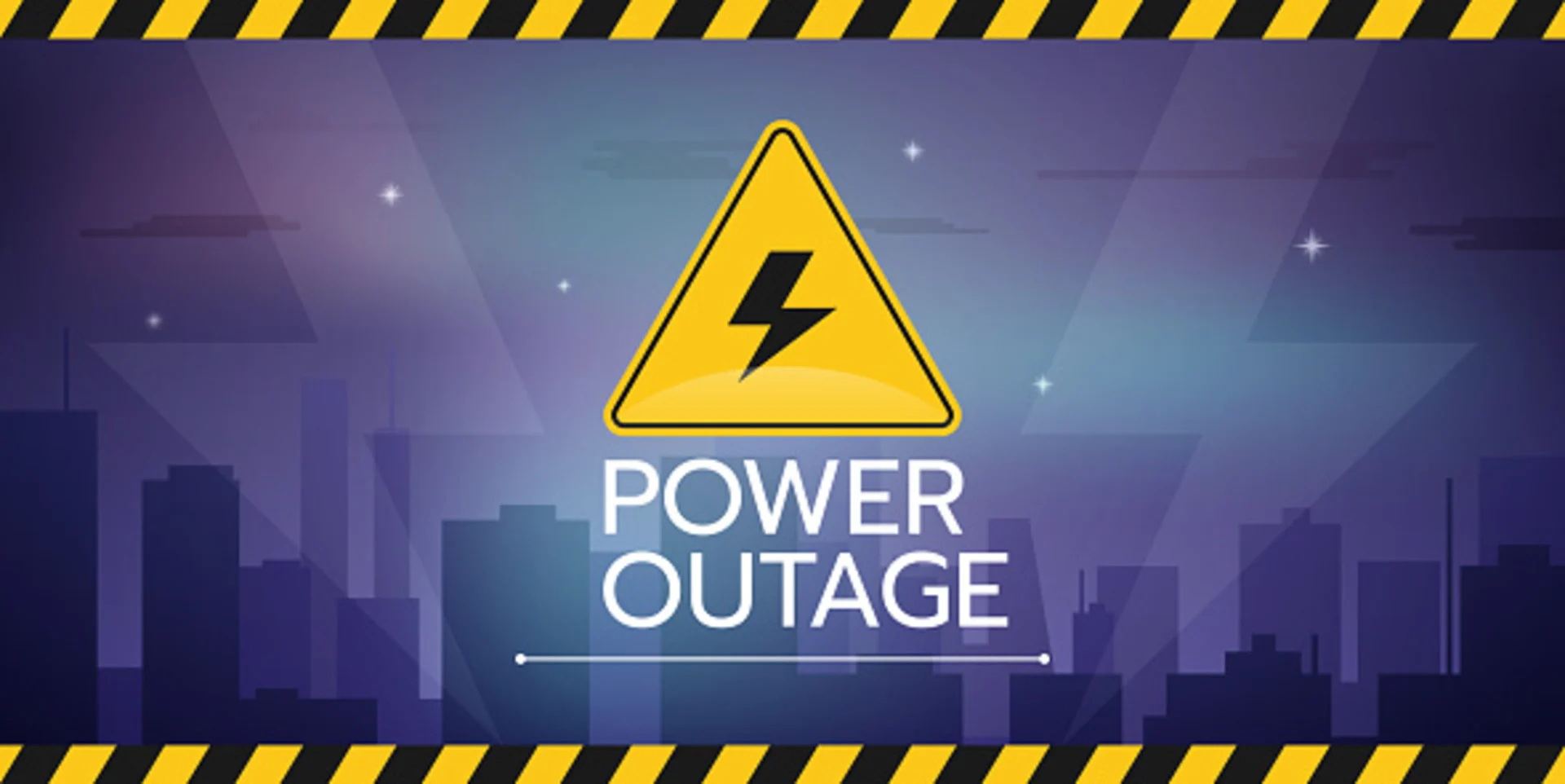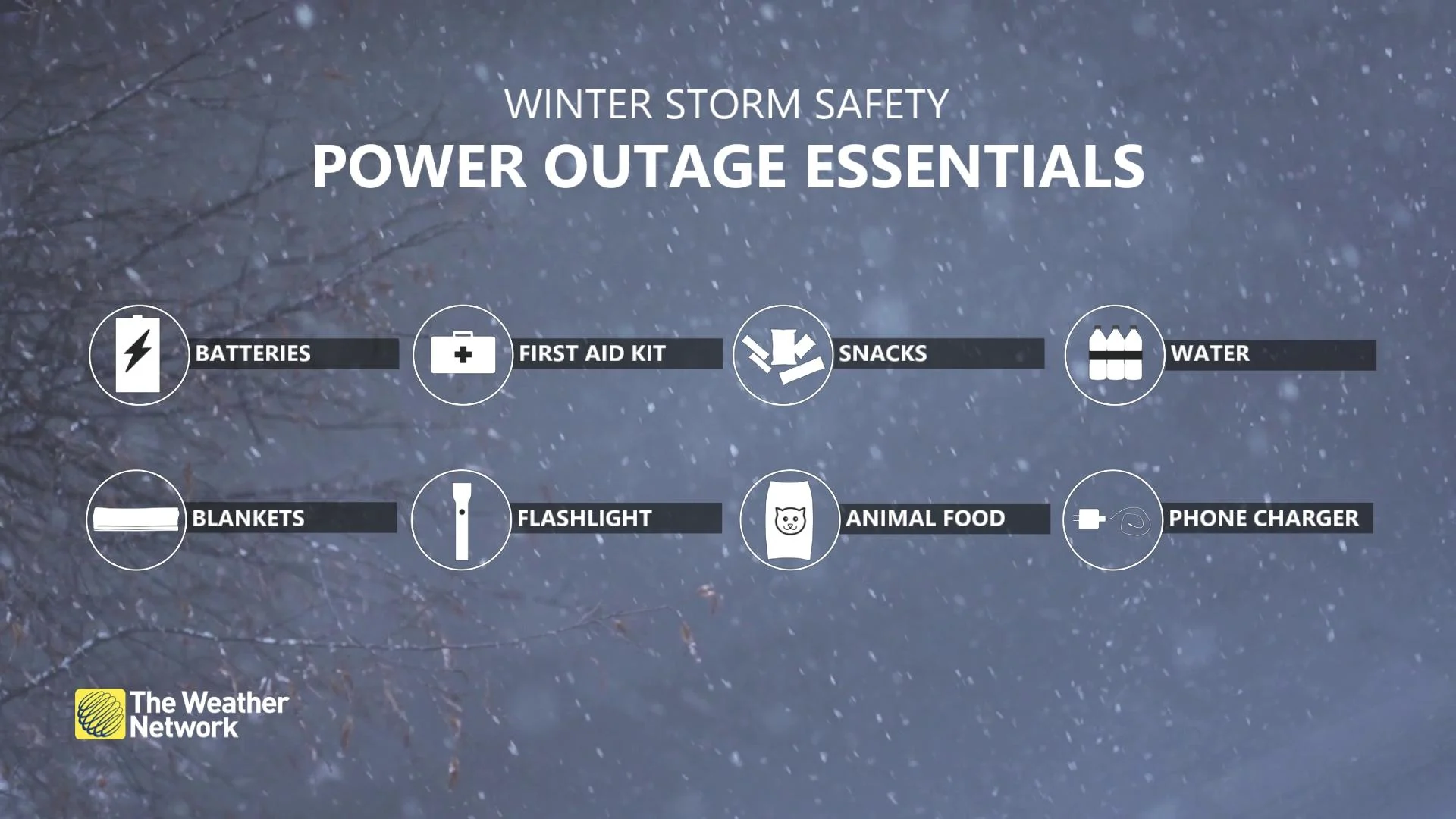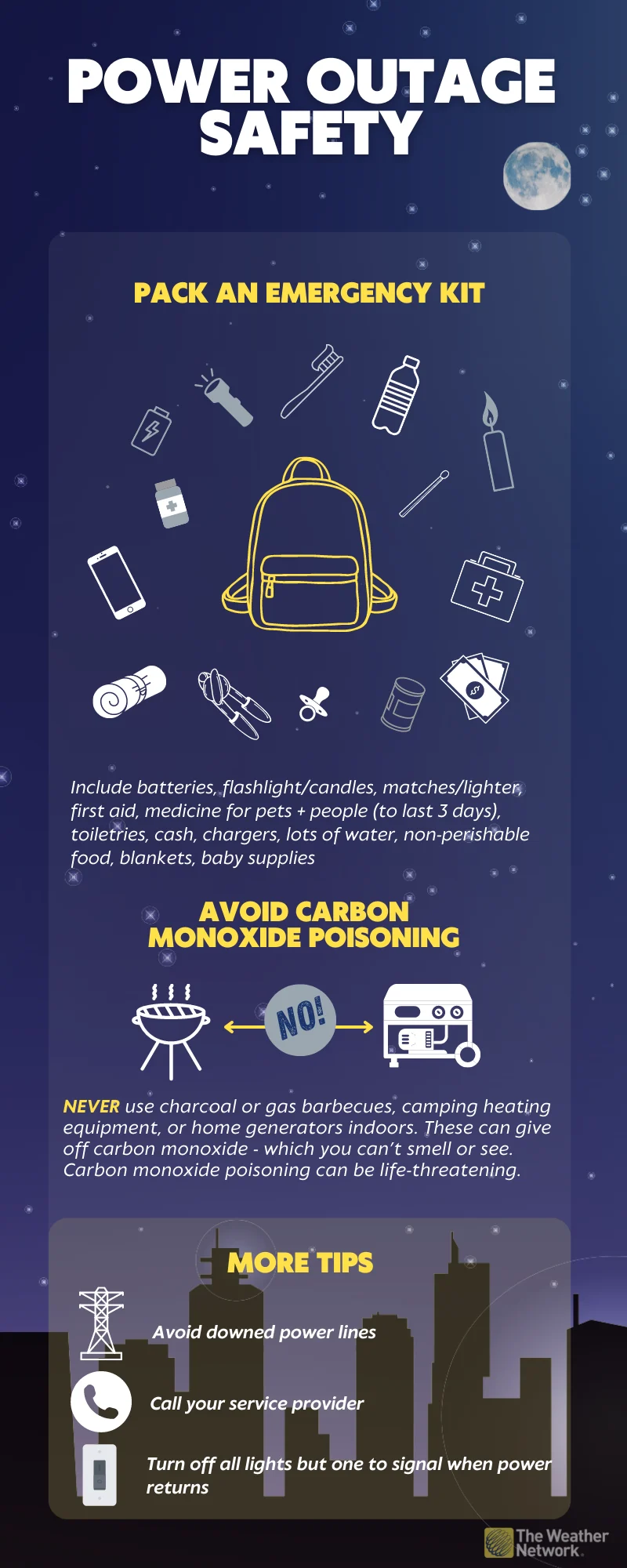
Staying safe during a power outage: infographic
Severe weather events can lead to power outages. Here are some tips to keep in mind before and during an outage.
Most power outages only last a few minutes — but some of them — like the ones caused by freezing rain, high winds, or cold temperatures — can last longer because they can damage power lines.
On Wednesday, parts of downtown Toronto, Ont., experienced a significant power outage. The cause hasn't been disclosed, but it's not a good time for an outage as temperatures are currently well below the freezing mark.
Here’s how you can plan ahead.
Pack an emergency kit
Stock it with:
Candles and matches or a lighter.
Lots of water - the general rule is about 2 litres per person per day.
Non-perishable food and a manual can opener.
Batteries.
A first aid kit.
Medical supplies and prescriptions for your family members and pets - experts recommend having enough to last about three days.
Toiletries.
Baby supplies, if needed.

RELATED: Everyone needs a home emergency kit. Here's what to stock yours with
During a power outage
Check if the issue is limited to your home. If it is, examine your circuit breaker or fuse box.
If the outage is affecting more than one home, contact your electric service provider
Do not approach any broken or damaged power lines or wires.
Turn off all electrical appliances, lights, and tools to prevent surge damage when power is restored - leave one light on though, that's how you'll know when the issue has resolved.
Keep your freezer and fridge closed. A full freezer can keep food frozen for up to 36 hours after an outage if the door is tightly closed, according to The Government of Canada.
Remember
Never, ever use charcoal or gas barbecues, camping heating equipment, or home generators indoors or in ANY enclosed space. These can give off carbon monoxide - which you can’t smell or see - and carbon monoxide poisoning can cause life-threatening injuries.
Infographic: Power outage prep
Click here for a zoomable version of this graphic.

Header image courtesy: Getty Images/Komarov Vitaly. Creative #:1171541773. Collection: iStock / Getty Images Plus.
